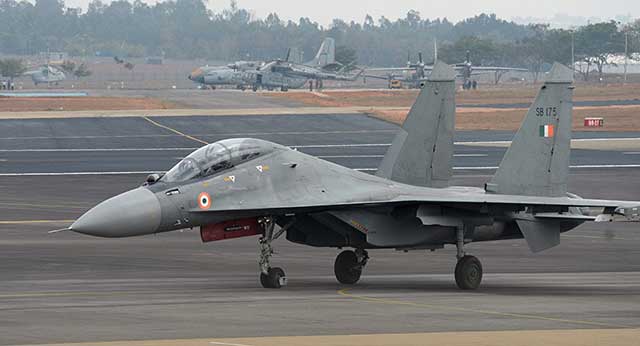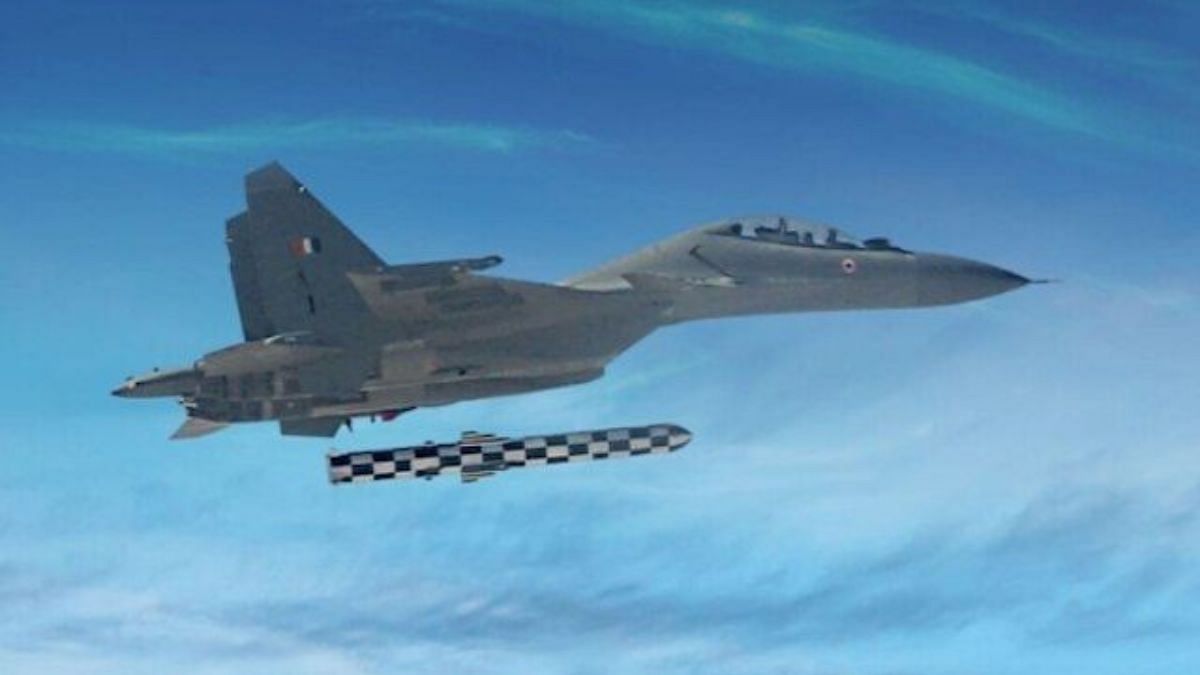walterbibikow
BANNED

- Joined
- Nov 12, 2022
- Messages
- 959
- Reaction score
- -4
- Country
- Location
Hindustan Aeronautics Limited (HAL) is going to request $4 billion from the Indian Ministry of Defense to upgrade the country’s fleet of Sukhoi Su-30MKI fighter jets, Indian media reports. About 150 fighter aircraft will upgrade fifth generation fighter jet as ‘Super Sukhoi’, after which the Indian Air Force’s fighter capacity will increase manifold reports NewsonAir.
New electronics:
The upgrades mostly concern the jets’ avionics and sensor systems. Notably, the slotted planar array radar, which dates back to the 2000s, is bound to be replaced by indigenously developed Uttam active electronically scanned array (AESA) radar, manufactured by HAL.

Russia lags behind, India makes AESA radar for its Sukhoi Su-30s
Over 270 Su-30MKI fighter jets from the inventory of the Indian Air Force will be equipped with AESA radar. Such are the plans of the Indian Ministry of Defense
DHRUTI RWR of Su 30 MKI:
The analog Tarang RWR on India's Su-30s have been replaced with the Dhruti digital RWR It is a new generation Radar Warning Receiver (RWR) designed and developed for installation on any fighter, transport aircraft or helicopter. It intercepts and identifies airborne, ship-borne and ground based acquisition, target tracking and missile guidance radars up to the J Band frequencies. The identified emitters (radars) are indicated to the aircrew by displaying corresponding set of symbols on the corresponding MFD page in the cockpits. A synthesized audio warning is provided to the aircrew at the birth of each emitter

Bharat Electronics signs licensing agreement with CASDIC, DRDO
The LATOT will enable BEL to manufacture and supply Digital Radar Warning Receivers to the Indian Armed Forces. Through this, CASDIC will transfer complete details of the technical know-how, testing and maintenance method for quality assurance to
Features of Dhruti RWR:
• Ultra wide band receiver with excellent sensitivity and dynamic range
• Real Time emitter trackers
• Dynamic reception regime control
• Capable of known & Unknown threats
• Master for CMDS & Jammers...
The Radar and RWR is to be complimented by a new domestically-manufactured infrared search and track (IRST) system, although its advantages over the original OLS-30 system remain unannounced

Boosting Power Of Su-30 MKI Fighters, India's Russian-Origin Sukhoi Jets To Get Indigenous Search & Track System
Su-30 MKI fighter jets are in news after HAL & BEL inked pact to to co-develop Infrared Search & Track System (IRST) for Sukhoi jets.
 eurasiantimes.com
eurasiantimes.com
A modernized cockpit with new displays is also going to be installed, in addition to a new digital flight control computer (DFCC).
The weaponry is also to be upgraded with the ability to carry an expanded range of domestically-manufactured air-to-air missiles, cruise missiles and sensor pods

IAF to increase Sukhois armed with BrahMos supersonic cruise missile with over 500km-range
The IAF currently has 40 SU-30 MKI with BrahMos, the only supersonic cruise missile in the world.
 theprint.in
theprint.in
State-owned Hindustan Aeronautics Limited (HAL) has successfully integrated the Software Defined Radios (SDR) supplied by Israeli Rafael company successfully. Su-30MKI also now features an indigenous ANS-1100A VOR/ILS System that helps aircraft navigate by using fixed ground-based beacons when coming for landing and an Upgraded Radio Altimeter which aids Pilot to carry out low level or night flight below 2500 feet.
Israeli Rafael company had won a contract for 400 Software Defined Radios (SDR) from Indian Air Force (IAF) to upgrade its entire fleet of Sukhoi-30MKI, Mirage-2000, MIG-29 UPG and LCA-Tejas fleet. BNET-AR/Global-Link Airborne software-defined Radio have been integrated into most of the fighter jets so that the Pilots can communicate with each other without been eavesdropped by the rival pilots in the vicinity.
BNET-AR/Global-Link have replaced HAL developed Integrated Communication suite INCOM 1210A which was considered a highly problematic and unsecured channel. Su-30MKI also features upgraded RAM-1701AS radio altimeter which is also integrated with the newly inducted Dassault Rafale fighter jets.
150 out of 262 Su-30MKIs operated by the Indian Air Force’ are expected to undergo the upgrade program, which is planned to start in 2024 and deliver the first upgraded aircraft by 2025. The prototypes to be launched for the Super Sukhoi program will include new systems in the steps and can start with full-scale upgradation 2027-28. It has become necessary to upgrade the Air Force Sukhoi-30 MKI to keep it relevant in the future air war because its software is deteriorating very fast. The Air Force hopes that the first Super Sukhoi aircraft will be ready by 2025.
The ‘Super Sukhoi’ will be a superb multi-role fighter which will dominate the neighbouring countries and the entire Indian Ocean region. The feathers of this aircraft will be made of carbon fibre. The cockpit and all systems will be improved in the modernisation program. It has been designed in such a way that it will be easy for pilots to shift to fifth-generation fighter aircraft. Along with this, the aircraft will be modernized in collaboration with the BrahMos Air-to-ground supersonic cruise missile program.
@Skull and Bones @VkdIndian @INDIAPOSITIVE @Raj-Hindustani @Paitoo @Varunastra
@Windjammer @Primus @CivilianSupremacy @TopGun786 @Yasser76 @Abu Shaleh Rumi

Air Force To Upgrade Sukhoi Jets For 4 Billion Dollar To Increase Its Capacity And Capability - Asia Post
The Indian Air Force needs 4 billion dollar to upgrade its fighter aircraft Sukhoi fleet. Hindustan Aeronautics Limited (HAL) has already proposed the upgrade program, which is expected to be approved by the government soon. As a HAL nodal agency, about 150 fighter aircraft will upgrade fifth...
Last edited:









